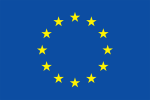The “UP_PLASTICS” ERDF project aims to develop and demonstrate the eco-design of plastics for construction and building via the exploitation of eco-products (natural polymers, animal biomass, etc.) and industrial waste from buildings (PU foams, cables, PVC, end-of-life paints) using semi-industrial transformation methods.
It is based on :
- identifying sources of synthons, including suitable extraction and (bio)refining methods
- formulating and transforming these synthons into functional building materials
- the design for re-circularity of these functional materials
- their benchmarking and applications in relation to conventional plastic building materials
Centexbel's role
- Pre-processing. The aim of this stage is to reprocess the waste supplied by the sorting centers (e.g. floor coverings). Thanks to the new Polysepp recycling unit, it will be possible to efficiently separate PVC from polyester. These different materials will then be sent to other partners to generate starting synthons (depolymerization).
- The development of 2K PU (two-component, BIOPU). These polyurethane-based resin formulations are then used in the manufacture of coatings and adhesives. These solvent-free formulations are easy to process at room temperature. The starting products will be either those generated by the partners during WP1 or commercial biosourced products (e.g. bio-based isocyanates). The ability of these formulations to form coatings will be analyzed on the basis of pre-testing (knife coating). The properties of these formulations will be adapted (viscosity, adhesion, added properties) according to the requirements and specifications of WP4. To achieve this, various optimizations will be implemented, such as the choice of catalyst or the addition of adhesion promoters.
- The development of bio-additives for foams and coatings. Current chemical additives are toxic (e.g. phosphoryl trichloride, brominated additives) and will soon be banned by new European regulations. Centexbel will develop flame retardants obtained by grafting phosphorus molecules onto bio-based molecules. The latter will be part of the sugar family or other substitutes such as vanillin. These additives can be used in new formulations to bring additional properties to final coatings, foams and adhesives. Performance evaluation will be carried out by the other partners
financing






